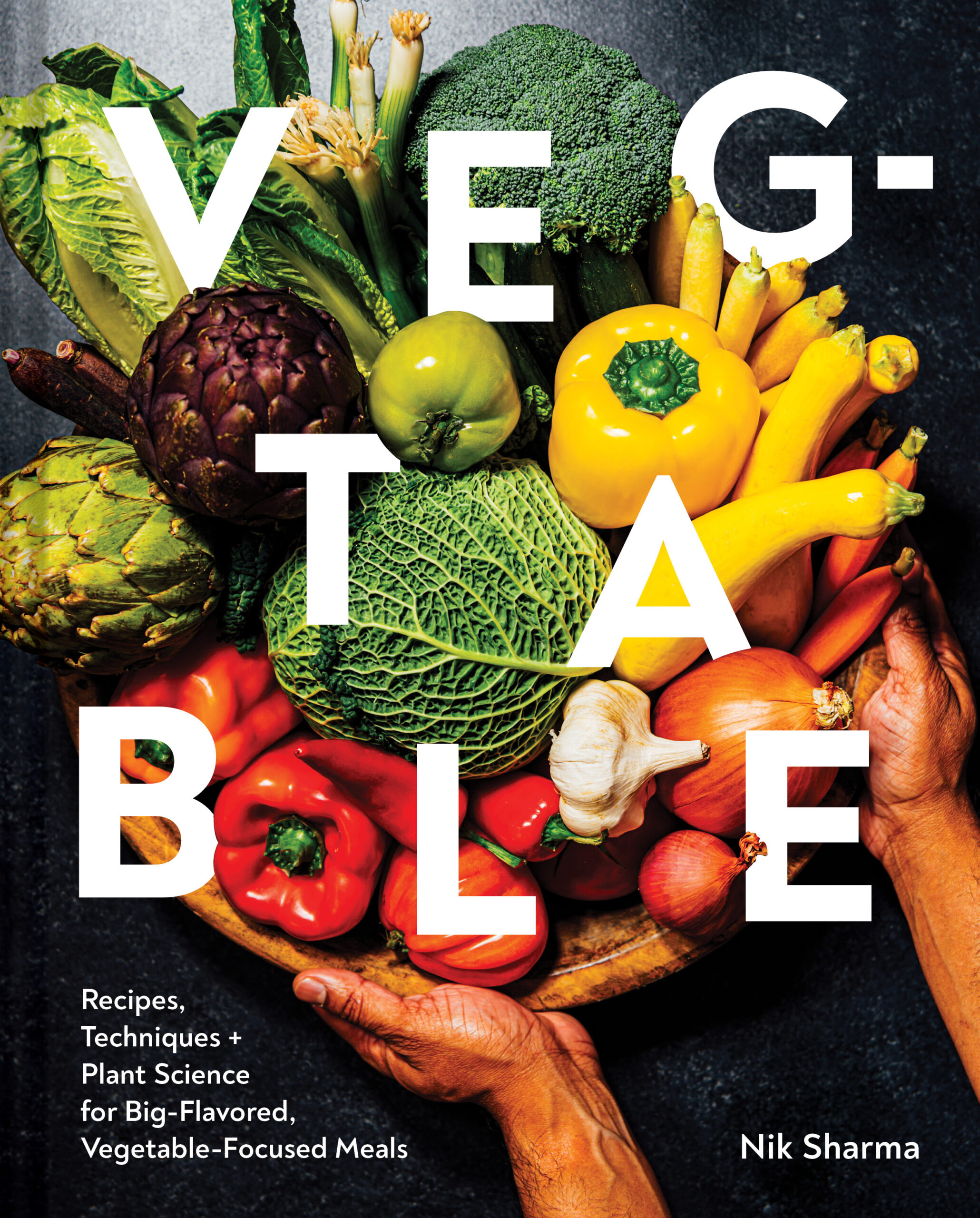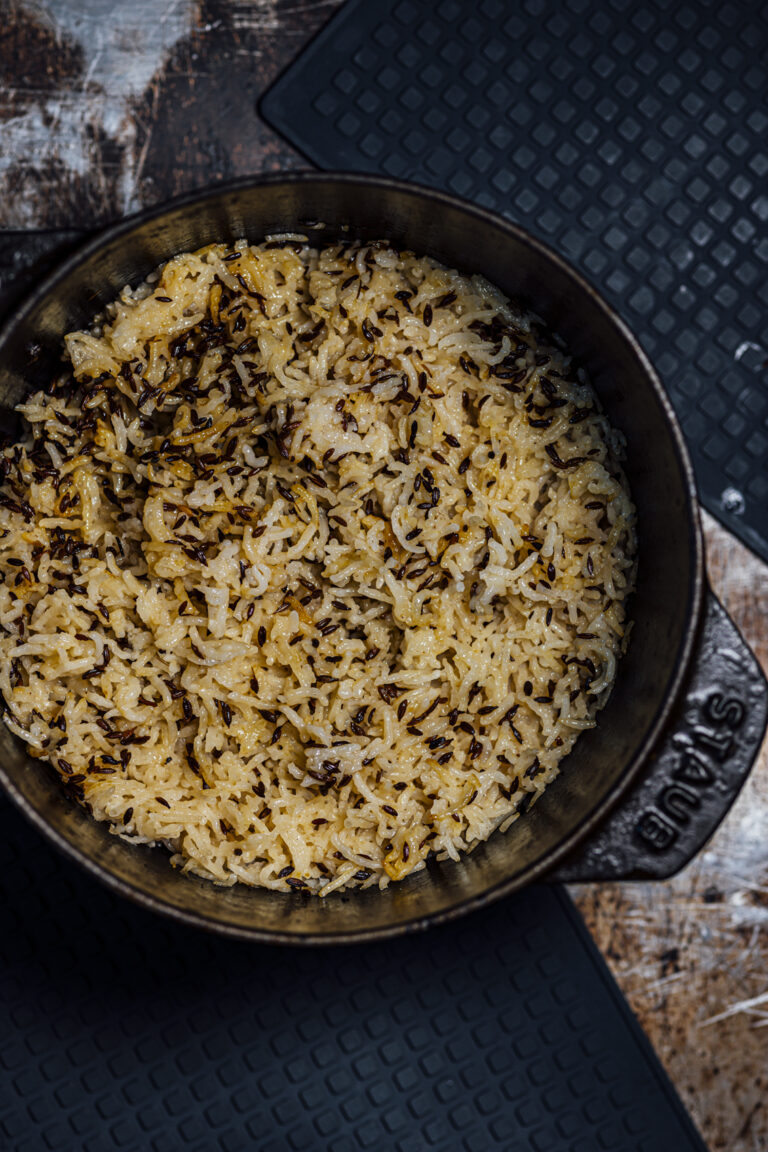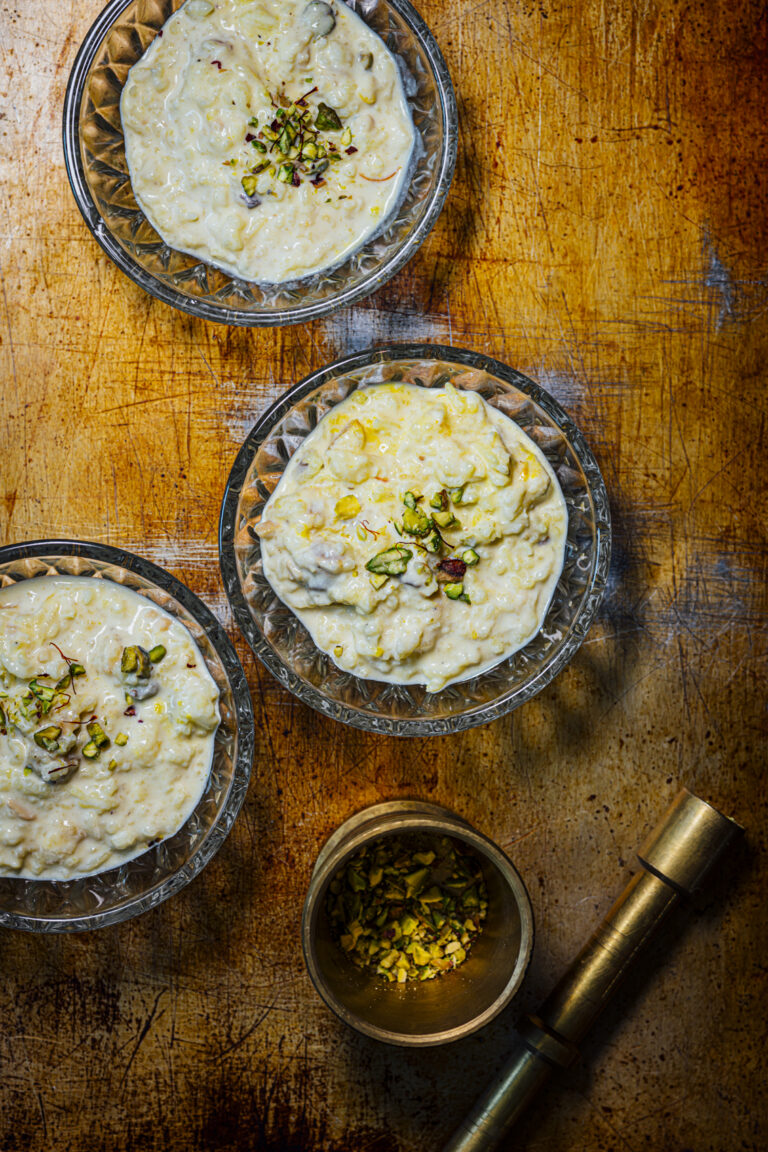
As someone who loves to cook and eat rice, I take my rice very seriously. It’s often the sun on my menu around which all other dishes orbit. Rice brings an incomparable comforting texture that goes with any meal; it counteracts the spiciness of dishes and helps carry the flavorful liquids of curries, dals, and stews. Rice can relax an upset stomach and calm things down. Even Paddington eats boiled rice with chicken when he gets a tummy upset. Yes, he eats basmati and knows the aroma all too well, judging by his wagging tail when I cook rice. He thinks that pot of rice is for him. Rice is the one grain I always have in stock in my pantry, and I think if you don’t already, you must rectify the situation.
What is Basmati Rice?
Basmati originates from two Sanskrit words – vas = aroma and mayup = ingrained or present from the beginning. When the words are combined, mayup changes to “mati” and creates “vasmati”, which people pronounced as “basmati”. Basmati can be spelled in various ways – Bansmatti, Bansmutty, Bansmati, Bansmuttee, and Basmatee but basmati is the more common word I’ve encountered. As per the BRC, the global basmati rice market grew from $10.26 billion in 2022 to $11.65 billion in 2023, and the demand for this grain is expected to grow considerably over the next decade.
Basmati rice is defined by minimum kernel dimension, an intense aroma, and the texture of the cooked rice, which involves high volume expansion during cooking, a long length of cooked grain, and fluffiness. These features of basmati rice are determined by the plant’s genes and used in plant selection. Basmati genetics is hugely important, and the scientists at NYU’s Center for Genomics and Systems Biology sequenced the entire genome and found that basmati is a hybrid of two types of rice – japonica (the rice from East Asia) and the rice group aus (found in Bangladesh).
The Aroma
The intense, unique scent of basmati rice comes from various chemicals, and 2-acetyl-1-pyrroline (2AP) is one of the significant aroma molecules. The strength of this aroma is determined by genetics and the environment in which the plant grows, and some varieties of basmati, like the Basmati 370 strain, carry a more robust aroma than others. A fun fact, 2-AP is also responsible for the buttery aroma of freshly popped popcorn and bread!
I’ve noticed that when I cook plain basmati rice (with or without a few spices), and just salt, the aroma of the basmati rice is very weak. I learned to cook plain basmati rice without salt early on as a child and have never looked back. Some might scoff at the lack of salt, but I don’t notice it. When I skip the salt, the aroma is intense, which leads me to think that cooking the rice in salted water might be detrimental to the aroma of the rice. Suppose I were making a pulao or biryani where other ingredients and spices are added. In that case, I’ll use salt because, in the presence of these spices, a lot is going on, and the aroma of the rice gets complimented by the scents of the other ingredients going in.
Why Does Basmati Not Turn Sticky On Cooking?
Basmati rice is a type of long-grain rice, and the starch granules contain a large proportion of a starch molecule called amylose (basmati and jasmine rice have about 73% amylose) and a smaller quantity of another type of starch called amylopectin. Amylose doesn’t gelatinize on cooking, so long-grain rice like basmati and jasmine remain separate. Amylopectin can gelatinize easily and is found in sticky rice like Thai glutinous rice and short grain rice; these types of rice turn sticky on cooking.
I need to clarify that it’s not that basmati can’t turn sticky on cooking. If you try hard enough, anything is possible. If you whisk the rice or stir it often as it cooks, the rice grains will break, and the starch granules will leak into the water and make it thick and starchy. But your patience will reward you if you leave the rice untouched during cooking. The rice will cook long and tender, and the grains will be separate.
How to Buy and Store Basmati Rice
While many basmati rice brands are available at stores and in Indian markets, I ensure I buy the ones grown in India (look online or in Indian grocery stores, there are many good brands to choose from). Generally, basmati from India is aged before selling. The aging of basmati rice is important because it helps develop the aroma of the rice. Typically basmati should be aged for a year (you don’t need to do this yourself, the manufacturer takes care of this). There is another variety of basmati rice that I’ve seen less here in the West – broken basmati. In India, my parents would buy this variety of basmati rice as a cheaper everyday cooking rice, while the whole grain basmati rice was reserved for fancier, special occasions.
I store basmati rice in a large glass container with an airtight lid away from sunlight in a cool dark spot in my pantry.
How to Cook Basmati Rice
- Rinse: Rinse the rice in a fine mesh strainer with cold running tap water to remove the rice “dust” that forms as the dry grains rub against each other during storage. Once the runoff water is clear, the rice is ready. If the dust isn’t washed off, it will make the cooking water starchy, and the grains will stick. I prefer not to stick my hands into the rice while rinsing and recommend not doing this; the more the rice is agitated, the more the grains rub against each other, and the runoff water will remain turbid forever.
- Soak: I soak basmati rice for 30 minutes and then discard the water. This will help the rice cook faster, making the grains plumper and fluffier. After soaking, I rinse the rice under cold running tap water and then cook it. This helps get rid of any excess starch that leaks out. Soaking and cooking times are inversely proportional; the longer you soak the rice, the faster it will cook, but the risk of the grains falling apart is also higher. Another advantage to soaking dried grains and seeds, research has shown that it removes a significant quantity of heavy metals that plants absorb from the soil.
- Frying: For a simple dish of boiled rice, you don’t need to fry the grains in oil or ghee. However, the rice is often fried when making pilafs and biryanis until the grains no longer stick together. This helps the grains stay apart during cooking.
- Do not stir basmati rice during cooking. This will break the grains, and the liquid will turn starchy.
- Boiling: There are two ways to cook rice. One involves cooking the rice in a large quantity of water and the other in a smaller amount. I prefer the latter method for most of my cooking, but when I make biryanis, I use the first method. They all have a place depending on your skill and comfort level. I recommend trying both to get a sense of how to cook rice.
a) The Parboiling Method:
I call this method the parboiling method, because the rice is cooked halfway in water, then drained, and steamed to completion. Start with 1 cup/200 g of rinsed and soaked basmati rice and 6 cups/1.4 L of water in a large pot and bring the water to a boil. Reduce the heat to medium and cook for about 6 to 7 minutes, until the grains are partially cooked. I take one or two grains of rice, break them in half to see how the interior looks. There should be two concentric rings in the center of the grain, the majority of the outer ring should be soft and translucent and the inside ring opaque and stiff. Remove the pot from the stove, drain, and discard the water. Cover the pot with a clean kitchen towel or a double layer of foil. Place the lid over the pot (a heavy lid like that of a cast iron Dutch oven is great here). Place the pot and cook over the lowest heat setting until the grains are completely cooked and light and fluffy, 10 to 15 minutes. Be very careful here, the seal between the lid and the rice needs to be tight. If the rice dries out quickly during cooking, it might be undercooked and burn easily. I use this method in my Lamb and Vegetable Biryani recipes on Serious Eats.
b) The Absorption Method:
This is the method I prefer for most of my cooking. The rice is cooked to completion in a smaller quantity of water, until all the water is absorbed and boiled off. Start with 1 cup/200 g of rinse and soaked basmati rice and 2 cups/480 ml of water. The water needs to cover the grain by at least 1 in/2.5 cm. Bring the water to a rolling boil over high heat and then reduce to a simmer. Cover with a lid and cook, until the water is completely evaporated and the grains are tender, 10 to 12 minutes. Remove from the heat and let the rice sit covered for an additional 5 minutes. When ready to serve, fluff the rice with a fork.
- There’s another way to ensure the grains stay separate and long. Add 2 to 3 tablespoons of fresh lemon or lime juice to the cooking water during boiling. Citric acid will act as extra insurance by preventing the starch from leaking and making the water starchy, and the grains won’t stick. Note that the acid will affect the dish’s flavor if you use it in the absorption method but not the parboil method.
Some Basmati Rice Recipes to Cook At Home
Cumin Rice/Jeera Pulao
This is one of the simplest Indian pulaos to make, and even though it uses only two spices for aroma, it is remarkably flavorful. Cumin and freshly ground black pepper amplify the flavor of the basmati rice. Serve this pulao with any Indian dish, like the butter chicken, dal, or saag paneer.
4/5 from 1 ratings
Vegetable Biryani
A biryani is meant to be extravagant. Brightly colored, intoxicatingly aromatic, and rich with flavor, biryani is often served at celebrations, and this is true not only of biryanis made with meat, like the lamb biryani I’ve written about previously, but also of vegetable biryanis, like the recipe below. Vegetable biryanis take far less time to
0
lamb biryani
A bit of exciting news, some of you might have noticed that I’ve been writing a lot more at Serious Eats, well I’m happy to share that it’s now officially a regular monthly column on food science. This month, I’m exploring the science behind yogurt based marinades and to kick it off I’m sharing my lamb biryani recipe. Get the recipe at Serious Eats.
0
herbed lamb pilaf
Pilafs or pulaos, whatever you might refer to them as, are the best one-pot meals. You can serve this herbed lamb pilaf for a special occasion or as an everyday meal.
/5 from 0 ratings
Indian Rice Pudding/Kheer
One of the classic and most iconic desserts in India is kheer. Many versions of kheer are served at celebrations and holidays, but the one made with fragrant basmati rice remains my favorite. I prefer cooking the rice in the milk; not only does this help the milk absorb all the aroma from the rice, but it also helps develop the consistency of the pudding. Serve at room temperature or chilled. It also makes a very good breakfast option.
/5 from 0 ratings
2







1